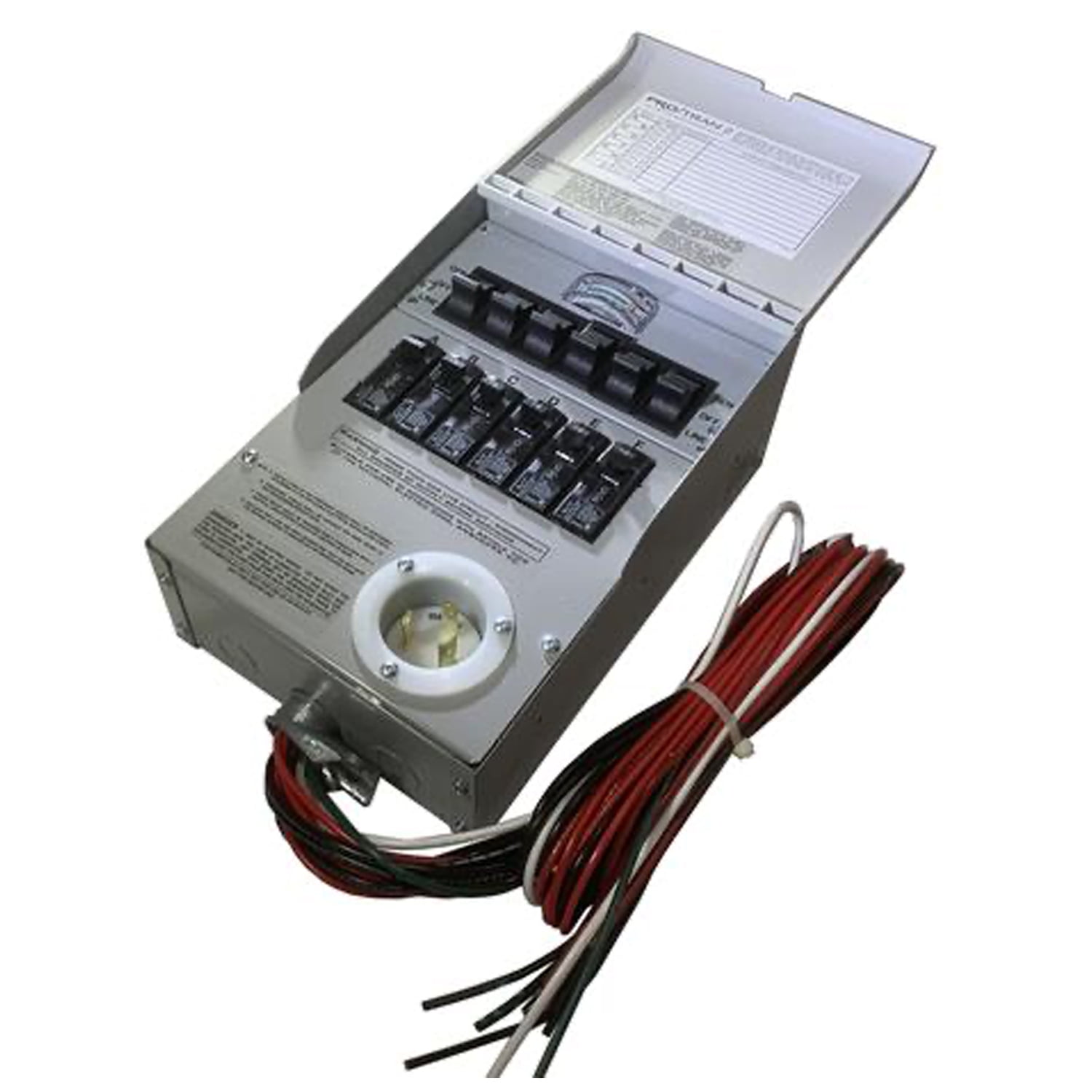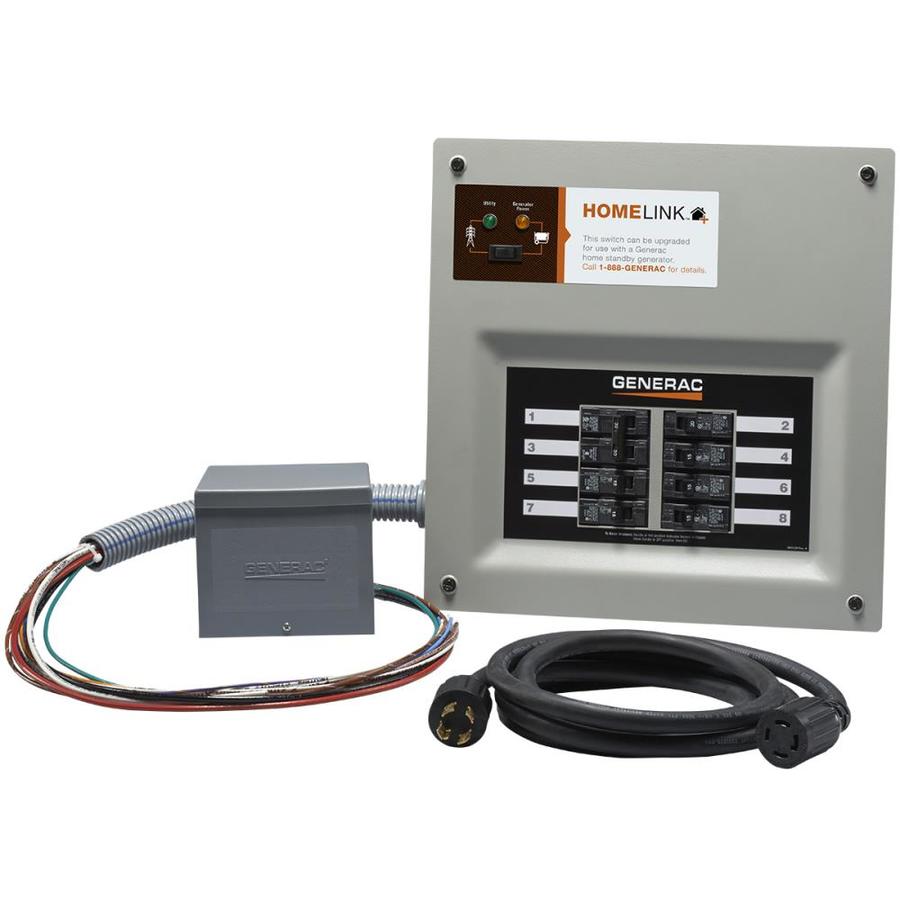

- #Transfer switch for generator generator#
- #Transfer switch for generator manual#
- #Transfer switch for generator portable#
- #Transfer switch for generator plus#
#Transfer switch for generator generator#
It is essential, in all circumstances, that a fool proof method of isolating the grid from your generator when the mains has failed. It stops the generator from back feeding the mains when its failed, endangering the lives of electricity utility workers.The mains power coming into contact with the generator, which would almost certainly burn out if this happened.
#Transfer switch for generator manual#
Why is a transfer switch panel important?Ī transfer switch (either manual or automatic) is required in every country when installing a generator at premises with a mains supply. On the left is a manual transfer switch (note the handle) and the right an automatic transfer switch. Automatic transfer switches change over automatically and start/stop the generator. Manual transfer switches need you to physically turn a switch or handle to change between the mains and the generator and to start the generator yourself.

The connection to the load remains and it switches between the load and the generator - making sure it does not connect both together. How does a generator transfer switch work? What does it do?Ī generator transfer switch has three main connections, one to the load, one to the mains and one to the generator. Manual Transfer Switches and Automatic Transfer switches. There are two main types of transfer switch. When used as a diesel generator accessory, they are used to keep the mains and generator supply separate, so that only one of these can supply power to your electrical load (the items in your house and business that use electricity) at the same time. Second, if you’re running a generator to your panel without an interlock device, you can send electricity back into power lines as utility crews are working on them, potentially electrocuting those essential workers.A Transfer Switch is an electrical device. CR never recommends this approach for two reasons.įirst, if you’re powering your house with a generator and the power comes back on from the street, you can overload the wiring in your home and fry your electronics. Technically, you can connect a generator to your circuit panel without an interlock, but it’s dangerous and, in many cases, illegal.
#Transfer switch for generator plus#
You’ll have to pay $50 to $150 for the kit, plus $400 to $800 for labor, which is a lot less than you’d pay for a transfer switch. Thus, power flows in only one direction.Īn electrician can tell you whether an interlock meets local building codes and whether it will work with your electrical system. Once utility power is back, you slide the interlock back to its usual position. When in place, the interlock covers your service panel’s main cutoff switch, so you can’t switch it on while the generator is running. The interlock device itself is a metal bracket installed on your panel. But rather than connecting to a transfer switch, the outdoor outlet connects directly to your existing circuit panel. The idea is similar: When the power goes out, you plug your generator into the same outdoor outlet. Plan on a cost of $500 to $1,500 for the switch, including installation, which usually takes less than a day.Īnd plan early-even if you already have a generator, it can be hard to find service pros when there’s a big storm in the forecast.Īn interlock kit is a less expensive alternative.

A transfer switch allows you to power any of those-and skip the extension cords. You won’t be able to connect anything that’s hardwired to your circuit panel, like a furnace or an air conditioner compressor, and you’re also out of luck if you have an electric range or dryer, because both use large, 220-volt, four-prong plugs. Keep in mind, too, that without a transfer switch, you can power only electronics that have a standard plug. And yes, multiple cords: Because they can be overloaded, you’ll need a dedicated cord for anything that draws a lot of power, such as a space heater or window air conditioner. Without this switch installed, you’ll need to run outdoor-rated extension cords from your generator into the house. Heating and cooling equipment are essential, as are water heaters and well pumps. The electrician can help you figure out which circuits you’ll want to power in an outage. The switch itself is installed by an electrician, usually alongside your main circuit breaker panel.
#Transfer switch for generator portable#
When electric service is out in your area, you plug your portable generator into an outdoor outlet that’s connected, through the house, to a transfer switch inside. Think of a transfer switch as a miniature circuit breaker panel that draws electricity from your generator instead of from the power company.


 0 kommentar(er)
0 kommentar(er)
